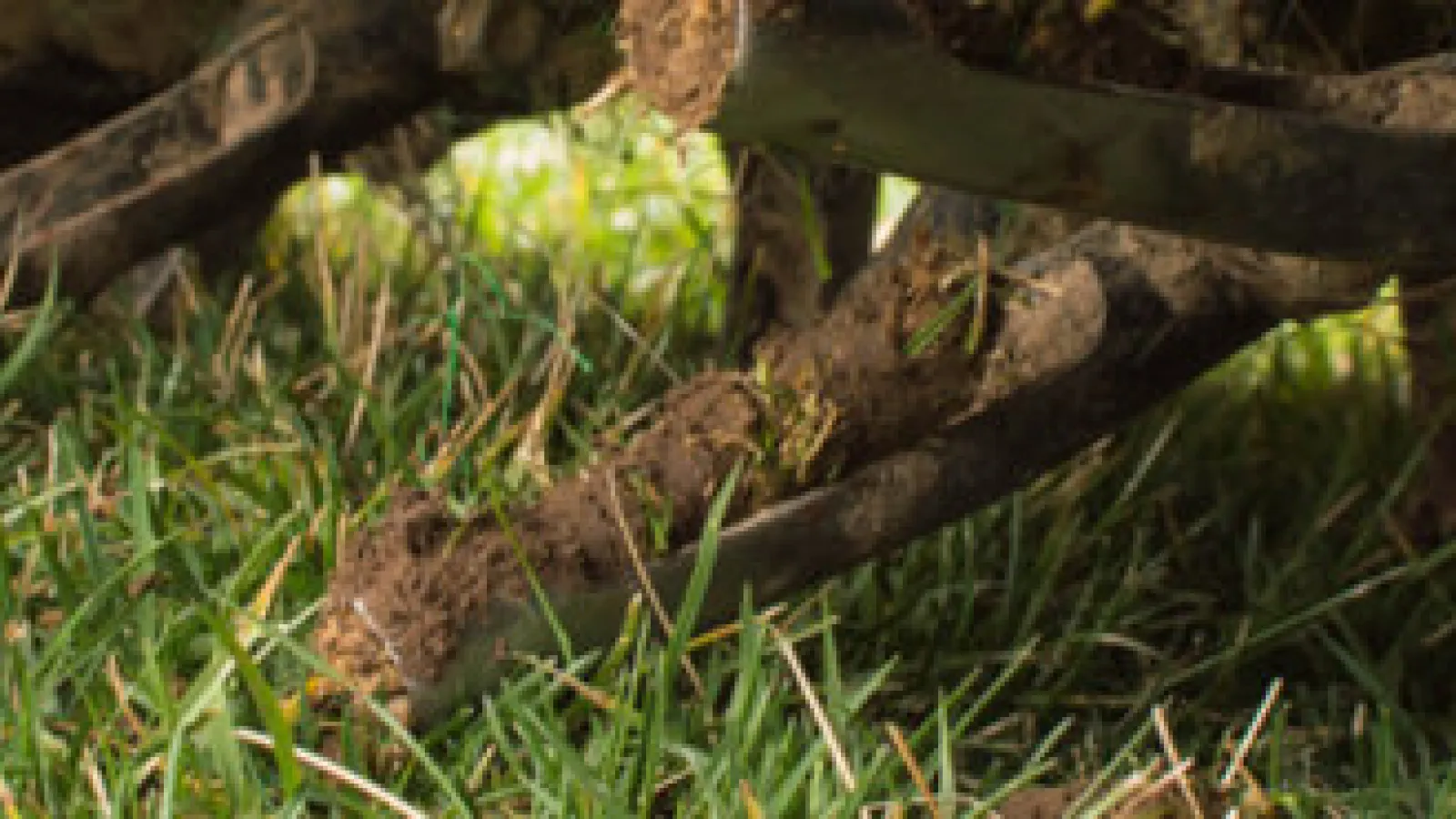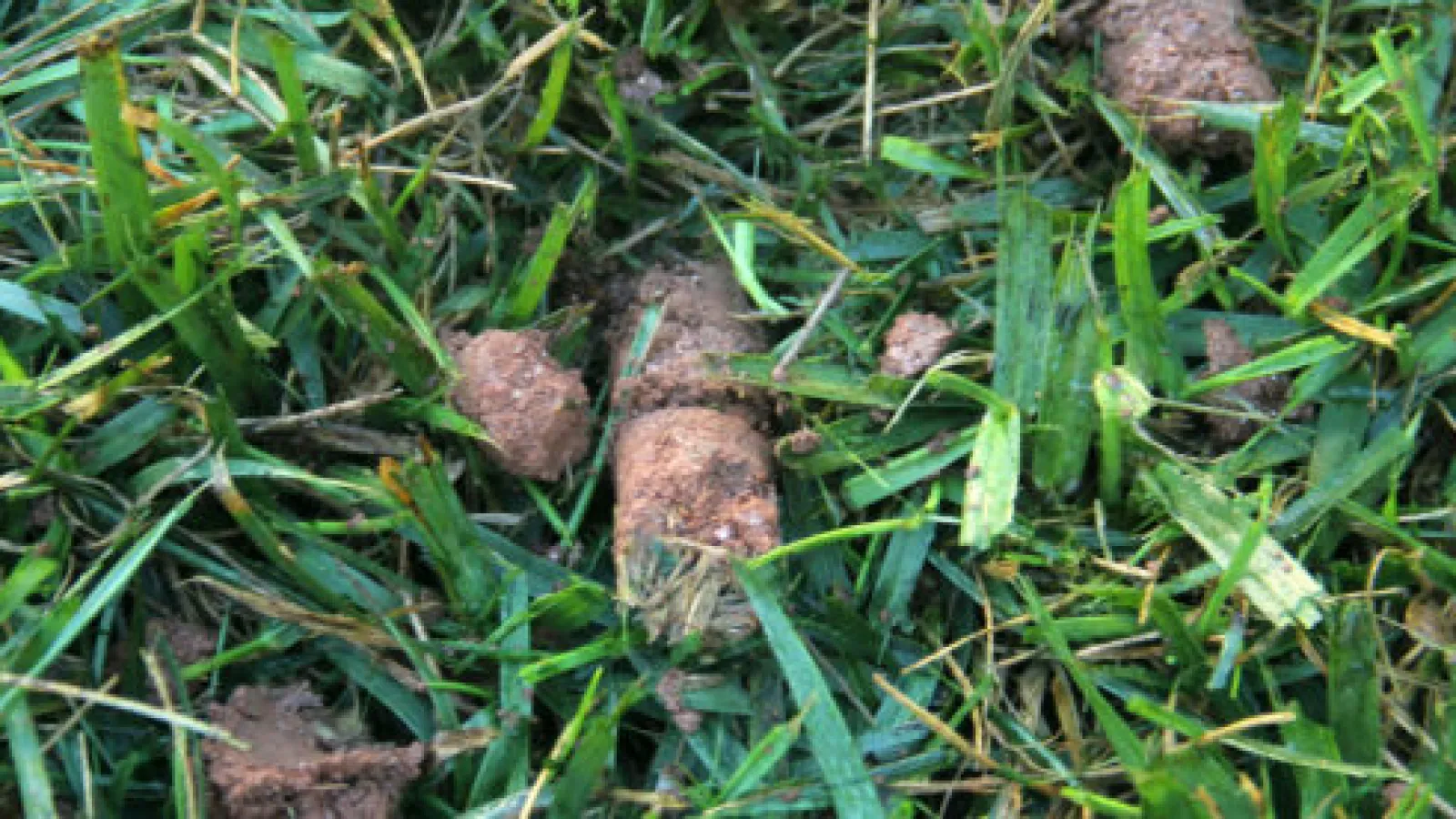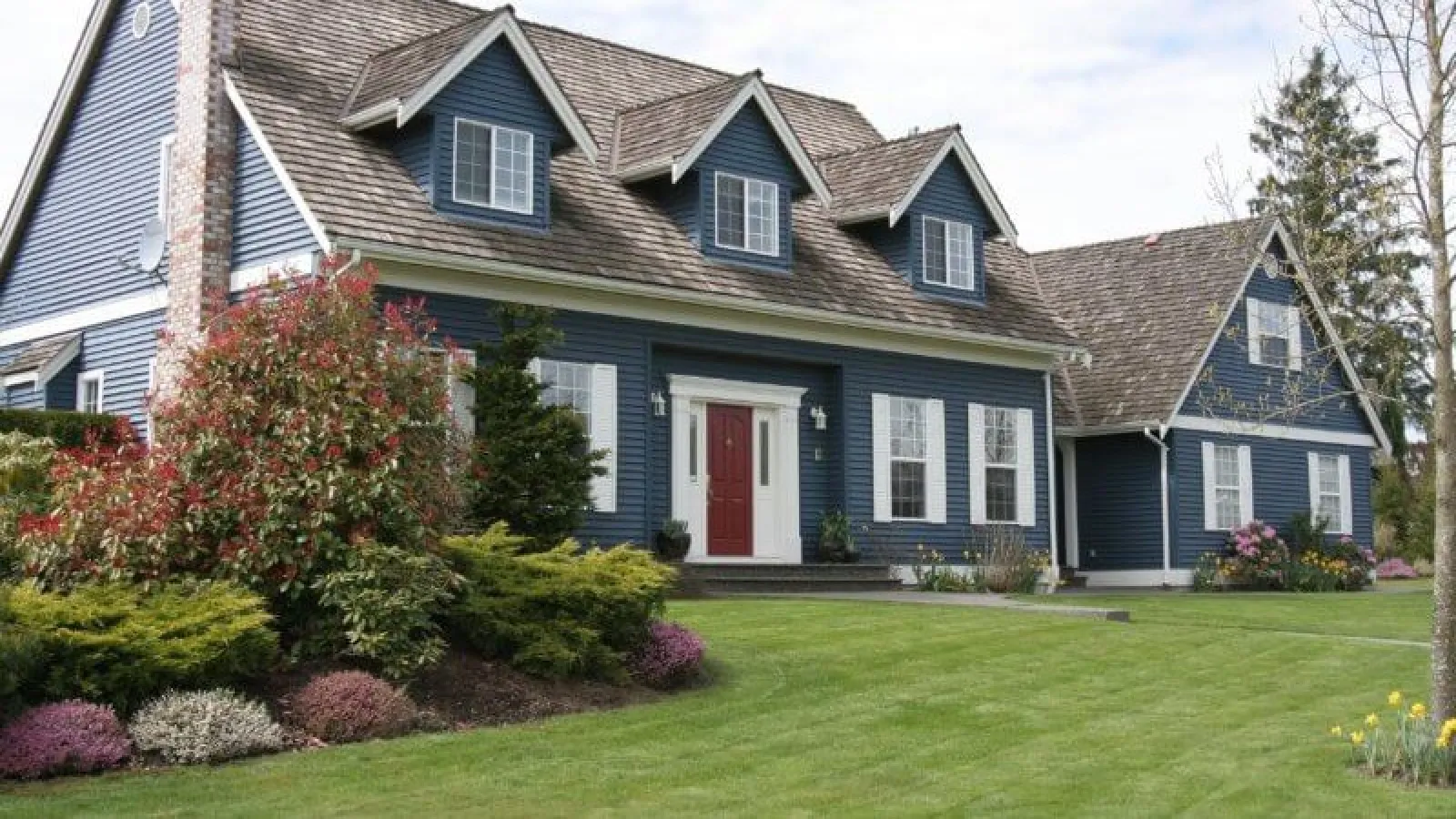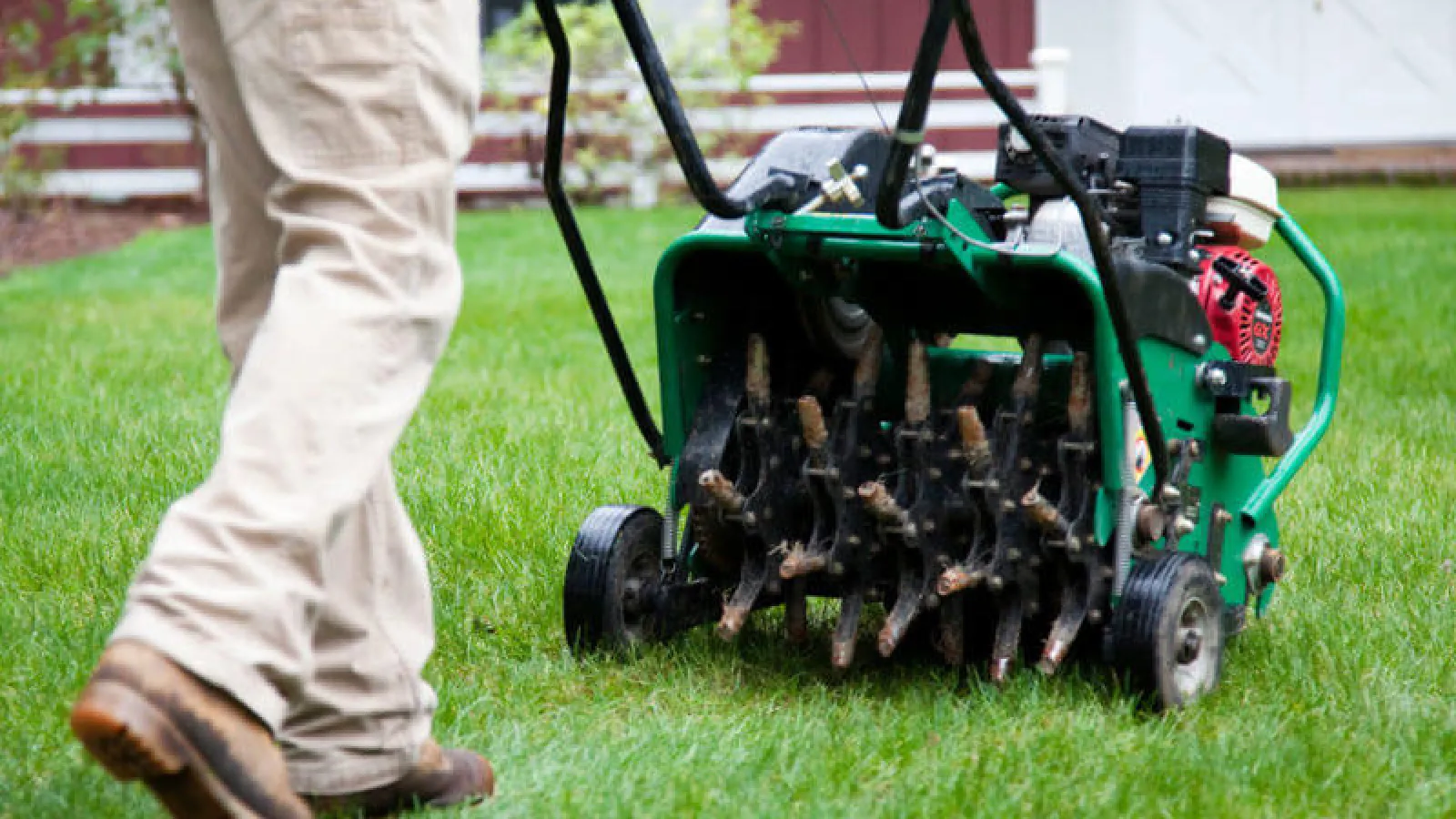Core Aeration
Have A Lawn You Can Be Proud Of
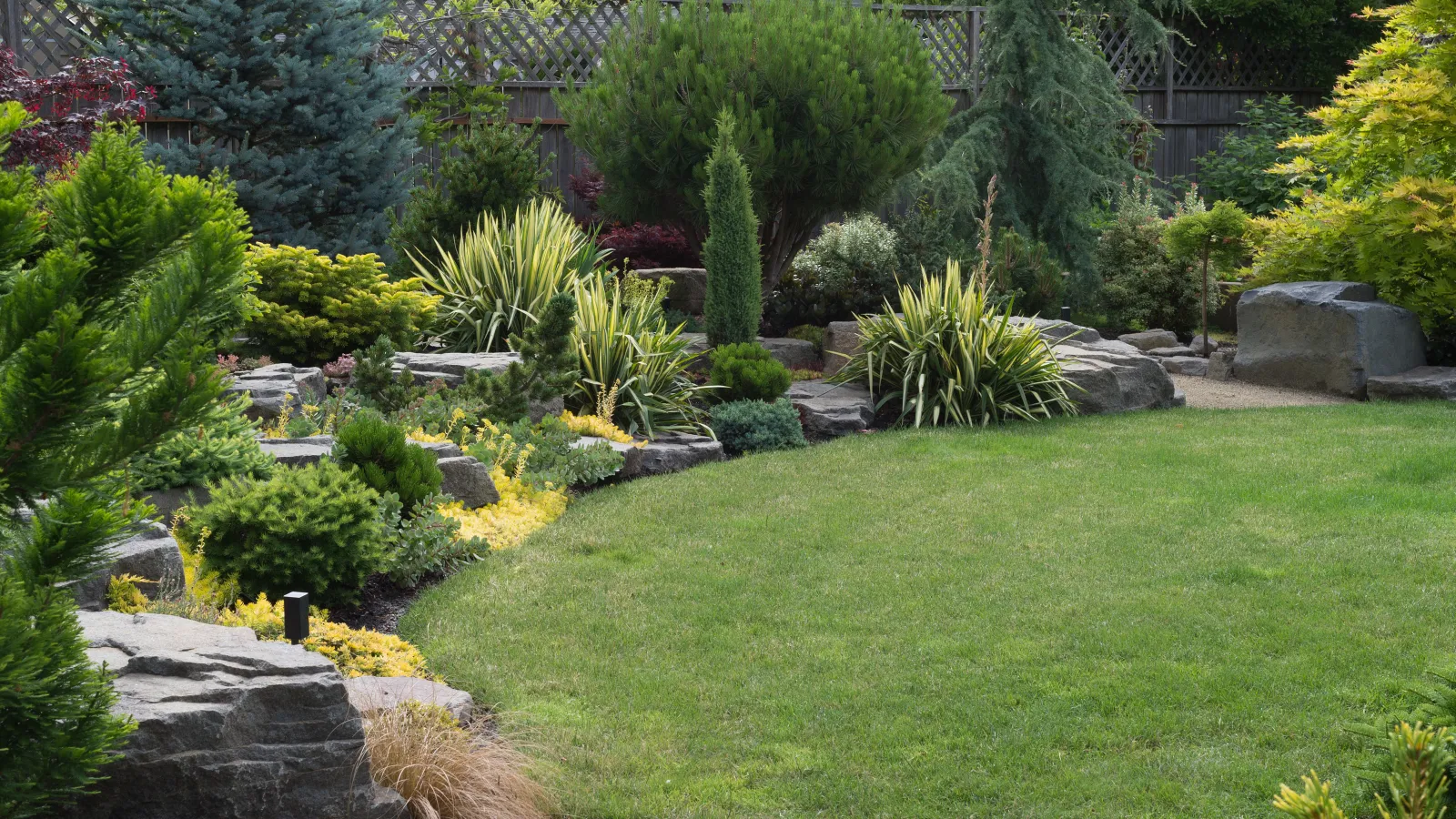
Ready For A Thicker, Healthier Lawn?
Warm-season grasses like Bermuda, Zoysia, and St. Augustine should be core aerated every spring. Core Aeration promotes growth and improves the overall health of your lawn. Our Famous "Double Pass" Aeration is the removal of small plugs from the soil allowing oxygen, water, and nutrients to get down in the soil.
Eliminate Soil Compaction &
Develop A Thicker Lawn
Warm-season grasses, including Bermuda and Zoysia, are made up of rhizomes and stolons. Rhizomes are root-like stems that grow horizontally at the soil surface or in other orientations underground. Stolons are the crown of plants—the above-ground growth. The runners of Bermuda are stolons.
Aeration eliminates soil compaction and breaks up rhizomes and stolons, allowing the grass to develop a deeper root system and grow laterally. Lateral growth promotes a thick, dense turf that is more resistant to weeds, drought, and disease.
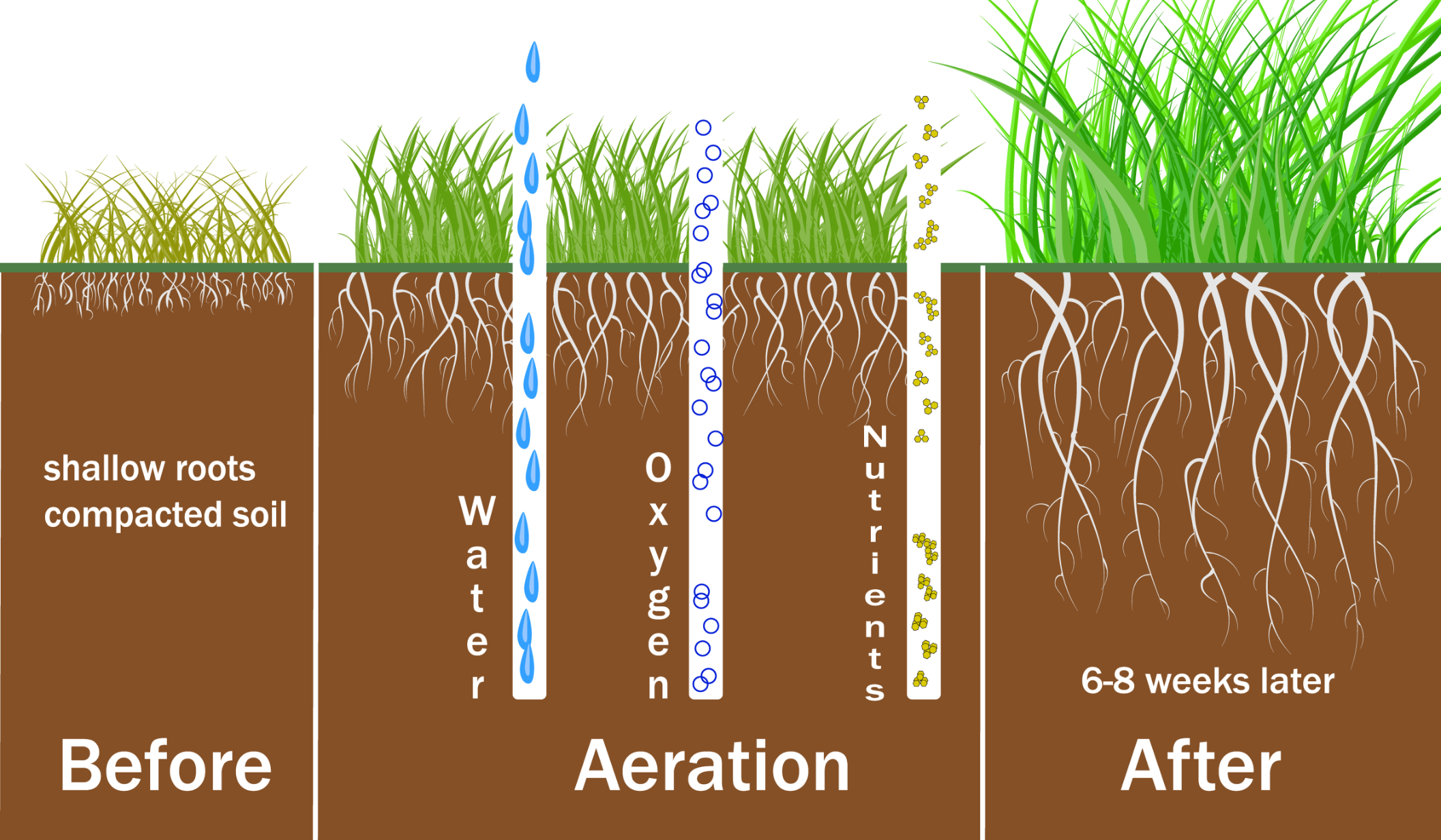
Core Aeration Frequently Asked Questions
What is core aeration?
Core aeration is the removal of small plugs of soil from your lawn. This allows oxygen, water, and nutrients to get down to the roots, which is necessary for growth and improves the health of your lawn. This process also helps to control thatch, the dead layer of grass left over from mowing by providing oxygen to the microorganisms that break down the thatch layer. Excessive thatch slows the growth and weakens turf.
What does aerating do?
Aeration eliminates soil compaction and helps develop a thicker lawn.
What are the benefits of aeration?
Aeration loosens the soil providing better oxygenation; allows oxygen, water and important nutrients to reach the root system; roots of spreading grasses are cut as the plugs are pulled allowing roots to spread in multiple directions, ; drives root depth helping your lawn better tolerate drought; controls thatch; improves drainage of your lawn; and helps prevent Dollar Spot and Zoysia Patch
When should I aerate my lawn?
We recommend aerating warm-season grasses, including Bermuda, Zoysia, and St. Augustine, once per year in the spring.
